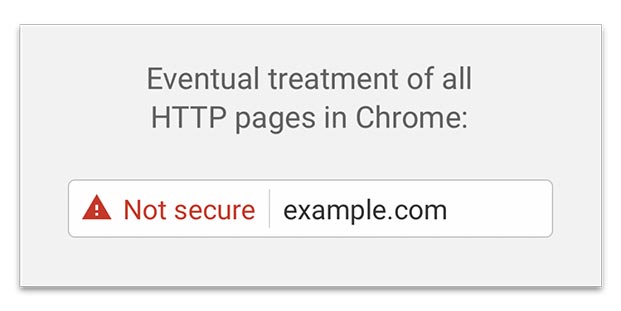Google has been working to ensure the Internet becomes a safer and more secure place for users. Back in February we wrote about Google’s quest for a more secure Internet, and now Google’s Chrome browser will be leveling up its security protocols with Version 62, to be released in October.
In the next step of its journey, Chrome will be implementing security warnings on all non-HTTPS webpages. When visiting unsecured HTTP pages, the browser’s address bar will present the user with a “Not Secure” warning, which can be enough to deter an otherwise willing customer from trusting your website and making an enquiry.
But what’s the big deal with the S on the end of HTTPS? Well, it actually stands for Secure!
HTTPS (Hypertext Transfer Protocol Secure) is a communication protocol that protects the confidentiality and integrity of data transmissions between the user’s computer and the website. When HTTPS is shown your browser’s address bar, you can expect a private and secure online experience when using the website.
Data sent using HTTPS is secured via Transport Layer Security protocol (TLS), which provides three key layers of protection:
-
Encryption
— encrypting the exchanged data to keep it secure from eavesdroppers. That means that while the user is browsing a website, nobody can “listen” to their conversations, track their activities across multiple pages, or steal their information.
-
Data integrity
— data cannot be modified or corrupted during transfer, intentionally or otherwise, without being detected.
-
Authentication
— proves that your users communicate with the intended website. It protects against man-in-the-middle attacks and builds user trust, which translates into other business benefits.
To enable HTTPS for your website, you must obtain a security certificate (SSL certificate) from a certificate authority. While it may not be a dealbreaker for everyone, the sight of the ‘Not secure’ alert might be enough to make less tech-savvy users want to leave the site entirely, rather than seeing it as a warning to not enter any sensitive information.
Need help setting up SSL encryption for your website? Contact our friendly staff at info@webignite.com.au and level up!




